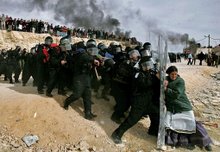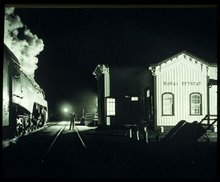I don't remember a great deal about this adventure. I was very young. But as I recall, my mother, Ruth Marjorie Ryan Carigan, went up against the back-of-the-bus norm of Chattanooga during World War II. She, a white and very young mother from Boston, rode on the back of the bus, with her two toddlers and the black people of Chattanooga
A few days ago, several of our OLLI (Osher Lifelong Learning Institute at UK) teammates reported on a field trip to Montgomery, Alabama to visit the remaining effects of Rosa Parks' stand. These were museums, churches, gathering places, neighborhoods, cityscapes, and so forth. They also stopped in Birmingham to visit the 16th Street Church, scene of some of the most significant events of the fight for humane civil recognition of skin color (and origin). After all, these things were not relevant to natural human rights.
When I had revisited both of the scenes in my imagination, this time aided by the direct recollections of friends, I thought of a misty series of events from my early childhood. I was about 4 years old and fairly well still protected from contexts. I did not understand that one human being didn't count when compared to others. But I carried the events with me for the rest of my life. Every day you live, whether you can analyze it or not, stays a part of your makeup, no matter what follows.
We had been downtown in Chattanooga, and we caught a city bus to go home to Signal Mountain or Red Bank; I can't remember which of these -- maybe a third place. No one is left alive who can pin down the time line with an adult memory. But what happened was that my mother sat down near the front to get out her fare. Then taking Pam and I by the hands, she led us to the back of the bus so we could play on that big, wide bench seat under the rear window. Mom sat 1 row in front of us, and as was her normal habit she struck up a conversation with a lady fellow passenger. I realize now that the lady was a black-skinned person.
At the next stop, the driver came back -- I suppose to reason with my mother. I don't think it did him much good, because she stayed right where she was.
In those days, Chattanooga had segregated bus seating, public restrooms, drinking fountains, department stores, schools, churches, theaters, restaurants, and who knows what else. The buses are the only place I recall seeing anybody of a kind different than me. I don't think Mom rode on the buses again.
I recollect that my aunt once took me to a minstrel show, put on by whites in blackface. When I had asked earlier in the day, Aunt Joann told me we were going to see a funny show. That brought about embarrassment for Mom in another day, when a black man came to our house, seeking work, and I called him "funny show." Which could it have been -- my mother probably sent me inside so she could pay the man a small bit for doing some chore. I hope she didn't send him away to avoid him and her being embarrassed by her ignorant son.
My father was not around usually. He was on the aerial photograph analysis team at the Tennessee Valley Authority. He and his colleagues evaluated the aerial images for mapping the bomber runs over the Ploesti oil refineries in Romania, along with other Allied targets.
Dad was not at home to help Mom to learn the idiosyncrasies of living in the South. Dad had grown up in Liberty, KY, Casey County, a place where even today there may not be any inhabitants of African, or any descent other than Scots-Irish. Mom was from the South side of Boston -- also heavy on the Irish. They had met when my father was a civil engineering student at the University of Kentucky and my mother was an English major at Transylvania College, both in Lexington.
They too were, I suspect, babes in the woods. Very few white people had a day-to-day source of knowledge about black people. My Dad was a hard-boiled bigot when I was young, but he changed drastically in the years of my adulthood. My mother on the other hand was predisposed toward openness, having at least learned more about the world through her education at Boston Latin High School -- the Alma Mater of Benjamin Franklin, Samuel Adams, Ralph Waldo Emerson, John Hancock, George Santayana, et al.
Many years passed between my few and brief encounters in Chattanooga, before my hermetically sealed whiteness would fall away. I never went to public school with black students until I was 16 when I moved to one of the top 3 biggest high schools in Kentucky, and even then there were only 3 black students -- children of faculty at Kentucky State College, an HBC (historically black college). When I went to UK in 1962, I don't believe there were any black students in an enrollment of 7 thousand.
A few years later, there was at least one black young man. One night he accompanied two other friends and I to Martin's, a Lexington beer joint in the near North side, where frequently we went to hear live Bluegrass music. When Ma Martin quickly asked our guest to leave, we did the same. I never told my mother about it. I wish I had. She would have been proud.







No comments:
Post a Comment